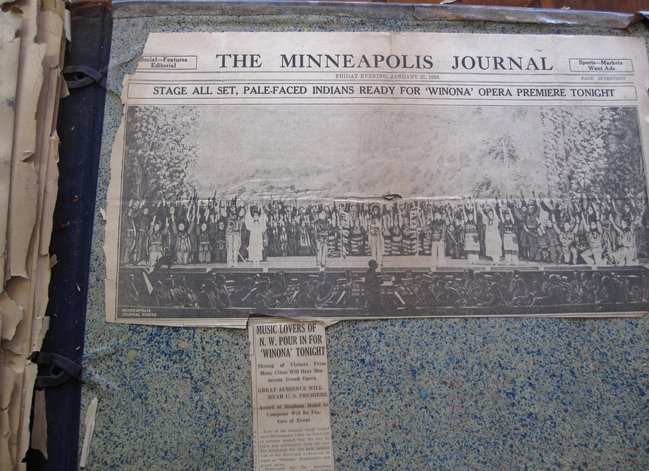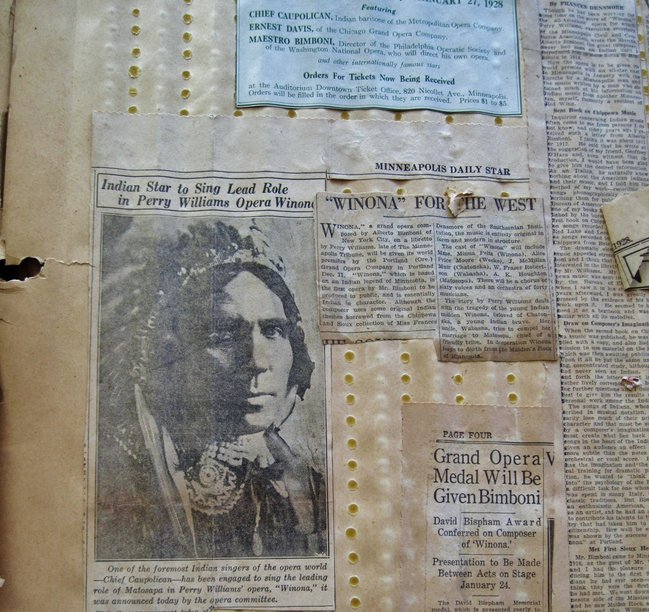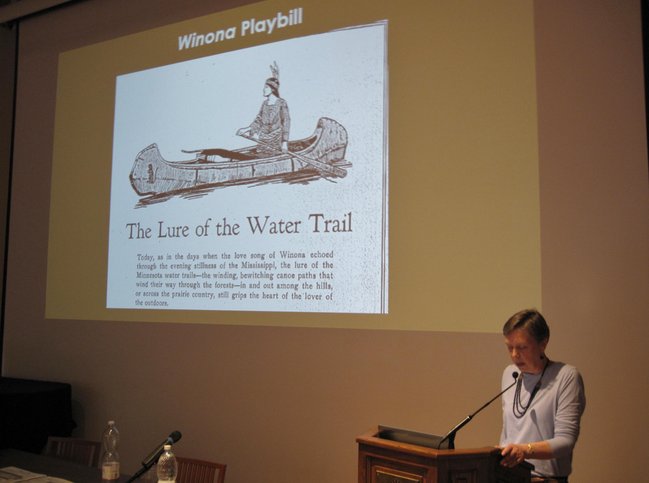Gretchen Peters, "The Significance of 'Real Indians' in the Minneapolis Performance of 'Winona.'"The article is published on the ICAMus website.
The complete Conference Papers presented in the ICAMus Session at "Intersections/Intersezioni" 2017 (Florence, Kent State University - Florence Program, June 1st, 2017, Profs. Fulvio Santo Orsitto and Simona Wright, Directors) are published (PDF), Aloma Bardi, Ed. The article by Gretchen Peters, The Significance of “Real Indians” in the Minneapolis Performance of Winona, llustrated with rare images from the ICAMus Bimboni Collection, is available for download.
Read and download The Significance of “Real Indians” in the Minneapolis Performance of "Winona" (PDF) by Gretchen Peters:
Winona, 'All-Indian Opera' by Florentine-American Composer Alberto Bimboni (1882-1960) and the Italian Contribution to the Indianist Movement in American Music and Culture. Publication of Conference Papers, "Intersections/Intersezioni" 2017. Edited by Aloma Bardi. Read and download the complete illustrated volume (PDF) HERE.
In the photo: The Minneapolis Journal, January 27, 1928. Article on Winona, on the day of the Minneapolis première. Alberto Bimboni’s Scrap Book, The ICAMus Archive.

GRETCHEN PETERS
UNIVERSITY OF WISCONSIN-EAU CLAIRE, MUSIC DEPARTMENT,
& THE AMERICAN INDIAN STUDIES PROGRAM
THE SIGNIFICANCE OF "REAL INDIANS"
IN THE MINNEAPOLIS PERFORMANCE OF "WINONA."
ABSTRACT
The performance of Alberto Bimboni’s Winona in Minneapolis on January 27, 1928, which drew an audience of 9,000 at the new Minneapolis Municipal Auditorium, was a point of pride for many in the region. The playbill boasted that the region had “furnished the material for the first genuine American grand opera,” referring not only to the legend and the librettist, but also the regional Indian melodies collected by a local ethnographer. The “genuine” and “authentic” nature of the opera was stressed in the playbill, as well as in the local newspapers, with particular attention being placed on the participation of “real Indians.” The character, Matosapa, was played by Chief Caupolican (Emile Barrangon), a Mapuche Indian from Chile, whose career included performing with the Metropolitan Opera, as well as on vaudeville and Chautauqua circuits. In addition to Chief Caupolican, six other Indians from the region danced in the production, who were reported as being “greatly pleased with the theme of the opera.” Joseph Belgard, who was from the Turtle Mountain Tribe in North Dakota, was reported as saying each night as he heard the opening chorus, “Ah, it almost makes me cry to hear it.” This presentation explores the significance of American Indian participation in the performance of Winona in Minneapolis, not only for the city of Minneapolis and the surrounding region, but also for the Indians themselves.
In the photo: Minneapolis Daily Star article on Indian operatic singer, Chief Caupolican, engaged to sing the role of Matosapa in Winona. Newspaper clips in Alberto Bimboni’s Scrap Book, The ICAMus Archive.

At the intersection of Italian Opera and Native-American motifs and music, Winona is an unpublished opera (c. 1915-1918) by Florentine-American composer and conductor Alberto Bimboni (Florence 1882 - New York 1960). It was performed in the US in 1926 and 1928 to great success and critical acclaim. Since the 1700s, the prominent Bimboni musical family had played an important role both in Italy and in the US, as inventors, composers, conductors, and teachers. The manuscript score of Winona and the unique Winona-related Scrap Book were donated to the ICAMus Archive in 2014 by a friend of the Bimboni family, Ms. Julia Jacobs.
In the photo: Gretchen Peters presenting at "Intersections/Intersezioni" - ICAMus Session, Kent State University, Florence Program, June 1st, 2017.


